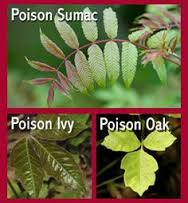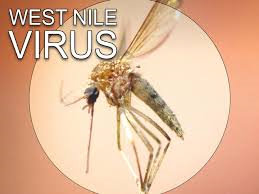1-Dehydration and Heat Stroke:
“Dehydration and heatstroke go hand in hand,” says Peter Galier, MD, associate professor of medicine at the David Geffen School of Medicine at UCLA. “It happens most commonly in people who are out in the sun.”
What happens, explains Galier, is that people sweat and replace their lost electrolyte-packed body fluids with only water. Dehydration can soon follow, and heatstroke can set in if a person becomes so dehydrated they can’t sweat enough to cool down, and their body temperature rises.
How to avoid it. “If you are outside and sweating, you should be drinking at least a 50-50 mix of Gatorade and water, which has potassium and sodium,” Galier tells WebMD. “You need to be drinking at least one small liter bottle of this mix every hour if you’re working or exercising in the sun.”
Warning signs. “Symptoms of dehydration can run the gamut from thirst and general fatigue, to headaches, nausea, and confusion,” says Galier. “Heatstroke symptoms are also headache and confusion, but include delirium and even hallucinations.”
What to do. While mild dehydration can be treated by rehydrating with fluids, heatstroke is more serious. “If you have heatstroke, you need to go to the emergency room so you can have intravenous fluids,” says Galier. “With really bad heatstroke, your kidneys can shut down.”
2-Poison Ivy and Poison Oak and Poison Sumak:
Poison ivy, poison oak, and poison sumac are plants that cause a rash in those allergic to them. This rash is caused by a chemical in the sap. About 50%-70% of people are sensitized to this chemical and are, therefore, allergic. Virtually everyone will eventually become sensitized if repeatedly exposed.
The old adage still rings true, explains Galier. “Leaves of three — let them be,” he says. So when the summer months begin, plan ahead when you know you’re going to be trekking through the woods.
Remember the old adage: “Leaflets three, let them be.” Poison ivy and poison oak have a triple-leaf structure you can learn to recognize — and then avoid.
Remember poison oak is more allergenic than poison ivy and poison oak is poison sumac, a deciduous woody shrub or small tree that grows 5–20 feet tall and has a sparse, open form. It inhabits swamps and other wet areas, pine woods, and shady hardwood forests. In Florida, poison sumac has been confirmed in the north and central regions, as far south as Polk County.
Figure 10.
Poison sumac leaves consist of 7–13 leaflets arranged in pairs with a single leaflet at the end of the midrib. Distinctive features include reddish stems and petioles (Figure 10). Leaflets are elongated, oval, and have smooth margins. They are 2–4 inches long, 1–2 inches wide, and have a smooth, velvety texture. In early spring, the leaves emerge bright orange. Later, they become dark green and glossy on the upper leaf surface and pale green on the underside. In the early fall, leaves turn a brilliant red-orange or russet shade
How to avoid it. “Poison ivy or oak is a tri-leafed plant, usually with a little yellow and purple, and it tends to be anywhere with shrubbery, hiding out with other vegetation,” says Galier. “So stay out of shrub areas or wear high boots or high socks, stay on the path, and don’t touch anything you don’t recognize.” You find both in the woods also.
Warning signs. Poison ivy, oak or sumac can creep up on you, even if you wear head-to-toe clothing. “It’s the oil of the leaf that’s the problem,” says Galier. “If you take your clothes off and you touch your clothes, you’re going to get it.” The “it” he’s referring to is the itching and swelling.
What to do. It’s time to get out the topical anti-itching cream again, like calamine lotion. “If you can suffer through it and it doesn’t get worse, you can ride it out,” says Galier. If it gets worse, you’ll need to see a doctor for topical steroids or oral steroids.”
Who Is Allergic to Poison Ivy, Poison Oak, and Poison Sumac?
Have you ever wondered: Can I get poison ivy? What you’re really asking is: Am I allergic to the plant? Not everyone is. Up to 85% of Americans are allergic to poison ivy, leaving at least 15% resistant to any reaction.
If you are allergic to poison ivy, you’re more likely to be allergic to poison oak and poison sumac, because all three plants contain the same rash-triggering plant oil called urushiol (pronounced yoo-ROO-shee-all). You’re also more likely to have an allergic reaction to other plant resins, such as the oil from Japanese lacquer trees (used on furniture), mango rinds, and cashew shells.
Sensitivity to poison ivy, poison oak, and poison sumac varies from a mild to severe reaction, and may not cause any reaction at all the first time you’re exposed. Some adults who reacted to poison ivy as children may find that they are now less sensitive. Some may even lose their sensitivity altogether.
What Causes the Rashes of Poison Ivy, Oak, and Sumac?
Many people break out in a rash when urushiol touches the skin. And even if you don’t recall touching the leaves of poison ivy, oak, or sumac, you may have unwittingly come in contact with their roots or stems.
Urushiol quickly penetrates the skin, often leaving red lines that show where you brushed against the plant. Symptoms appear 24 to 72 hours after exposure. Scratching the itchy rash doesn’t cause it to spread but can prolong skin healing and cause a secondary infection. The rash isn’t contagious, so you won’t spread it to others by going to school or work.
What Are the Symptoms of an Allergic Reaction to These Plants?
Symptoms, which generally last from one to two weeks, include:
- Red streaks or patches
- Itching
- Rash
- Swelling
- Blisters that may “weep” (leak fluid) and later crust over
- Inflammation and a burning sensation
Does it matter which plant you’re exposed to? NO unless you know Poison ivy, oak, and sumac all fall into the plant species called Toxicodendron, so the allergic reaction to all of these plants has the same name: Toxicodendron dermatitis. There are actually four poisonous plants in this group, since poison oak has both a western and an eastern variation. All four plants contain urushiol, so the skin reaction and treatment are essentially the same.
How Are Poison Ivy, Oak, and Sumac Rashes Diagnosed?
Poison ivy, oak, and sumac are generally diagnosed by their common symptoms of a rash, blisters, and itching following activity outside in a forest or field, but if you have any doubt, ask your doctor.
What’s the treatment for any 3:
- Wash the area well with mild soap and lukewarm water as soon as possible after contact.
- Wash all clothes, shoes, socks, tools, pets, and toys that may have become contaminated.
- Cool compresses may help during the blistering phase.
- Use a topical corticosteroid cream on the rash as directed by your doctor and there are some OTC corticosteroid ask your doctor.
- Try calamine lotion for the itching, but avoid skin products that contain anesthetics or antihistamines, which can cause their own allergic reaction.
- To help relieve the itch, try cool showers or a mixture of baking soda and water applied to the area. If sleep is a problem because of the itching, try an over-the-counter antihistamine at night.
- Apple Cider Vinegar takes out the toxins of the rash with rubbing alcohol decreasing the rash irritation by topically applying it when needed but remember it does dry out the skin. When I had poison oak just after this Memorial Day 2016 I applied the apple cider vinegar about 3 to 4 times a day for 15 minutes give or take and applied rubbing alcohol about 6 to 7 times when it was bad 1st into 2nd week and less in the end of the 2nd and 3rd week.
- With little itching to none the rash of any 3 will last about 3 weeks. It all depends how sensitive you are to the oil of these leaves. Worst thing you can do is constantly itch the area causing the rash to create another one to even breaking the skin integrity leading to infection and now expect this to be on you a month or more.
Call your doctor or a dermatologist for:
- Severe blistering, swelling, and itching
- Symptoms in sensitive areas such as the eyes, lips, throat, or genitals
- Fever
- A rash over large areas of your body
- A rash lasting longer than a week to 10 days
- Blisters that become infected with pus
Get immediate medical help for any difficulty breathing or severe coughing after exposure to burning plants.
In some cases, an oral steroid or other medication may be needed to relieve severe symptoms.
Transmission can occur in one of three ways:
- Direct contact with the plant
- Indirect contact when you touch pets, gardening tools, sports equipment, or other objects that had direct contact with the plant
- Airborne contact from burning these plants, which releases particles of urushiol into the air that can penetrate the skin, eyes, nose, throat, or respiratory system
Mosquito Bites:
While mosquito bites used to be little more than annoying and itchy bumps on your arm or behind your ear, now we have even more reason to avoid them with things like West Nile virusand Triple E (Eastern equine encephalitis) making headlines.
How to avoid it. Your attack against a mosquito bite is three-pronged, according to the CDC’s web site: “Use insect repellent, particularly those with DEET, picaridin, or oil of lemon eucalyptus; wear as much clothing as the warm weather will allow; and avoid the outdoors during dusk and dawn — peak biting times.”
Warning signs. Mosquito bites will appear as red, raised bumps on your skin. Worse, they’ll itch.
What to do. Mosquito bites usually go away in less than a week, according to the web site of the University of Maryland Medical Center. In the meantime, you can wash the area and keep it clean, use an ice pack or a cool compress to alleviate itching, take an antihistamine, or use an anti-itching cream, such as calamine lotion.
Nearly 80% of people infected with West Nile virus will not have any symptoms. If you start to experience symptoms like fever, headache, body aches, nausea, vomiting, and sometimes swollen lymph glands or a skin rash on the chest, stomach, and back, according to the CDC’s web site, see your doctor. There’s a chance these could be symptoms of West Nile virus.
Swimmer’s Ear:
Swimmer’s ear is a kid’s nightmare when summer finally arrives.
“Just like when your fingers get pruney when you’re in the water too long, the same thing happens to your ears,” says Galier.
When you swim, or even shower or bathe, water can get trapped in your ear canal, causing the canal to get inflamed and infected.
How to avoid it. Gone are the days of Silly Putty in your ears. Now it’s simply wax ear plugs, or custom-fit ear plugs, explains Galier, to prevent swimmer’s ear.
Warning signs. “The symptoms of swimmer’s ear are ear pain and decreased hearing,” says Galier.


